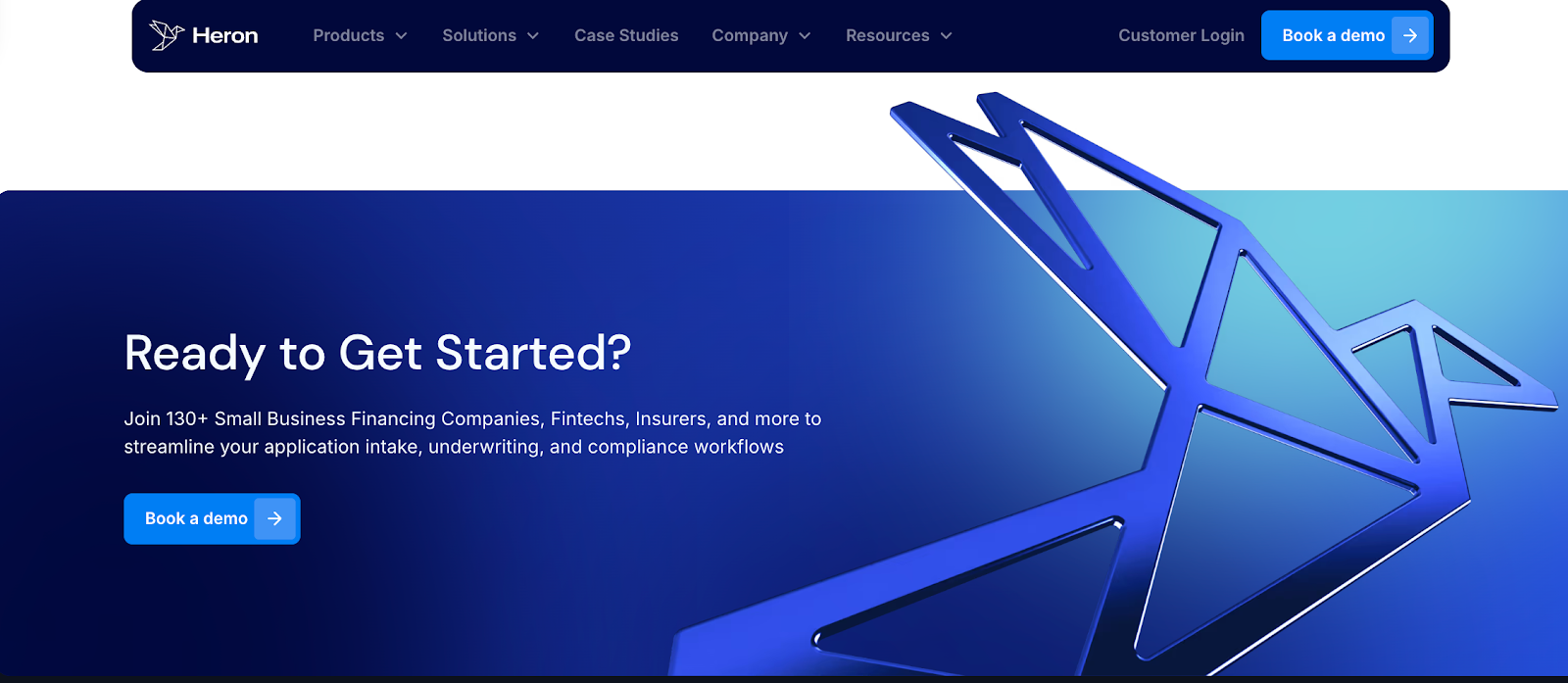Before automation, underwriters often spent up to 30 minutes per submission reviewing business bank statements. They had to calculate averages, flag overdrafts, and check for funder pulls or fake documents by hand.
A common frustration was timing. If a file did not get out before another broker, the deal was lost along with a long-term client.
Document OCR technology can help underwriters reduce admin work. But how? In this article, we will explore how it works and where it can be applied in lending, insurance, and other document-heavy industries.
What Is Optical Character Recognition?
Optical character recognition (OCR) is a technology that lets computers read and pull text from scanned images or image files. In simple terms, OCR makes it possible to take a photo of a document or a scanned page and turn it into digital text that you can edit, search, and share.
OCR processing does the heavy lifting by looking at the shapes and patterns in a picture of text and then matching them to actual letters, numbers, and symbols.
With modern OCR software, you can process printed text, handwriting, and even mathematical equations. This is useful for digitizing old records, creating searchable PDFs, or feeding information into databases.
Today, OCR services can handle many file types, support multiple languages, and even make smart corrections to improve accuracy in document processing.
How OCR works
OCR works through a series of steps. Here’s how it usually happens:
- Image acquisition: A document is captured with a scanner or camera, turning it into a digital image file.
- Pre-processing: The system cleans the image by fixing alignment, improving contrast, and removing noise so that text is easier to detect.
- Segmentation: The software splits the page into sections, isolating words and letters to make recognition more accurate.
- Character extraction: Each symbol is analyzed based on its lines, shapes, and features.
- Recognition: The OCR engine compares these shapes to stored patterns or uses AI models to match them with the right characters.
- Post-processing: The recognized text is refined by correcting spelling errors, formatting, and adjusting for language-specific rules.
8 Common Uses of OCR in Lending & Insurance Workflows
OCR is all about making information easier to access, process, and use. Let’s look at how it is commonly used today.
1. Digitizing Printed Documents
One of the main uses of OCR is turning stacks of paper into digital files. Funders no longer need to keep thousands of contracts, invoices, or historical records in physical storage.
They can scan these documents and turn them into PDFs. With OCR and intelligent document processing (IDP), the PDFs become text-based files that are much easier to handle and organize.
Instead of keeping thousands of paper forms stored in filing cabinets, brokers can have searchable digital PDF documents ready to pull up in seconds.
This speeds up client onboarding and reduces delays when reviewing past applications.
2. Automating Document Classification
Funding applications often come with a stack of different documents like credit reports, tax returns, and contracts. Sorting these by hand takes time.
OCR can scan the files and automatically group them into categories such as “financial statements,” “IDs,” or “contracts.”
This means the right type of file ends up in the right place without manual sorting. Reviews move faster, and brokers spend less time on paperwork.
3. Extracting Text From Scanned Documents
OCR shines when it comes to pulling out key data. Numbers, names, and dates can be taken directly from invoices, receipts, or contracts without retyping.
For instance, an underwriting team can scan and verify business bank statements even if they come in JPEG or TIFF format and instantly capture monthly balances or transaction histories.
4. Form Processing for Faster Decisions
Funding workflows involve endless forms: loan processing, client onboarding forms, and compliance declarations. OCR can read these forms and push structured data straight into a lending platform or CRM.
For example, a broker could scan dozens of contracts in BMP or PDF format and have all client details transferred to a database without retyping.
5. Risk Analysis and Credit Scoring
Once OCR extracts text, the data can support machine learning tools. Funders can use this to automate income-to-debt checks, detect missing fields, or flag unusual entries in loan applications.
OCR also simplifies risk checks by making financial data more accessible. A credit analyst can scan a borrower’s tax returns or bank statements and instantly work with the editable text.
Once digitized, the extracted data can feed into credit scoring models that calculate debt ratios and repayment capacity.
6. Verification and Authentication
Funders need to confirm that the information provided by clients is accurate. An OCR tool can scan ID cards, income statements, or legal documents and pull out details for cross-checking.
For instance, income reported in a loan form can be compared to numbers in scanned PDF documents to confirm accuracy.
7. Claims Processing Automation in Insurance
Insurance companies rely on forms and supporting evidence. OCR can scan claims, convert images into text, and capture key details like claim numbers and policyholder names.
Claims teams can then process this editable text more quickly, which cuts delays in settlements and improves client satisfaction.
For example, a batch of claims could be bundled into a zip archive, processed with an OCR system, and automatically uploaded into the claims platform.
8. Fraud Detection
Fraud often hides in altered or mismatched paperwork. OCR helps with fraud detection by reading printed or handwritten text and flagging differences across multiple sources.
For instance, an insurer could scan a claim form and compare the editable text to stored client records.
If numbers or details don’t match, the system highlights them for review. This level of accuracy reduces fraud risks across both lending and insurance.
Get Faster Document Processing & Sign More Deals with Heron

Teams used to spend hours on data entry, face high costs, and deal with delays that frustrate clients. Submissions often arrive as unstructured emails, costing more than $50 per application just to input into the system.
Every deal starts with piles of documents that arrive by email. They come in all shapes and sizes: printed text, scanned PDF files, handwriting, and countless other documents with inconsistent layouts and unpredictable file sizes.
Heron changes that. The platform is built to take the pain out of document-heavy work for high-volume MCA funders and brokers who want to scale without increasing headcount.
Your team gains fast access to accurate, decision-ready data the moment you upload a file. Here's how Heron works:
- Intake and classification: Heron captures and organizes every input document automatically. Whether it comes from email, portals, or APIs, the system classifies files by type and prepares them for downstream processing.
- Parsing and validation: The platform scrubs data from complex lending and insurance files, including printed text and handwriting. Heron detects duplicates, flags missing fields, and validates details to boost accuracy.
- Enrichment and normalization: The system enriches the scrubbed data with financial, industry, or licensing details, giving brokers and funders a clearer view of each deal. That structured information then flows seamlessly into your existing systems.
- Delivery to your systems: No more manual rekeying or CSV uploads. Clean, structured outputs move straight into your CRM or policy admin system, making data instantly usable.
With Heron, processing costs drop by 75% or more, submissions move in hours instead of days, and brokers and funders can scale volume to twice the capacity without adding headcount.
FAQs About Document OCR Technology
What is OCR in documents?
OCR stands for Optical Character Recognition, a process that turns document images, scanned pages, or even street signs into editable and searchable text.
It’s a foundational technology used in many tools that help people extract information from text in photos or files like PDF and PNG.
The only restriction of OCR may be the quality of the scanned image. Clear images improve text recognition, while blurry ones reduce accuracy.
Are there any free OCR?
Yes, there are free OCR tools online that let you process a few pages at no cost, and some even allow text search within scanned files. But if you’re looking for a tool that’s purpose-built for document intake, Heron is a good choice.
It helps high-volume MCA funders and brokers cut out paperwork by automating application intake, bank statement analysis, and even funder decision emails.
Is Google OCR free?
Google offers OCR through Google Drive and Google Docs, and it’s free to use. You can upload a PNG, PDF, or other image file, then open it with Docs to extract the text. It’s one of the two services most people use since it works well for simple text conversion.
How to use OCR for free?
To use OCR for free, you can upload your document images to Google Drive or try online tools that convert files into text. Most allow you to process basic pages without payment. This makes it easy to search text in scanned files without special software.
Does OCR work on all types of documents?
OCR can process many types of documents, including printed text, typed forms, and even handwritten notes. However, the quality of the source file plays a big role in how accurate the results are.
The only restriction of OCR may be the quality of the scanned image. Clear images improve text recognition, while blurry ones reduce accuracy.


